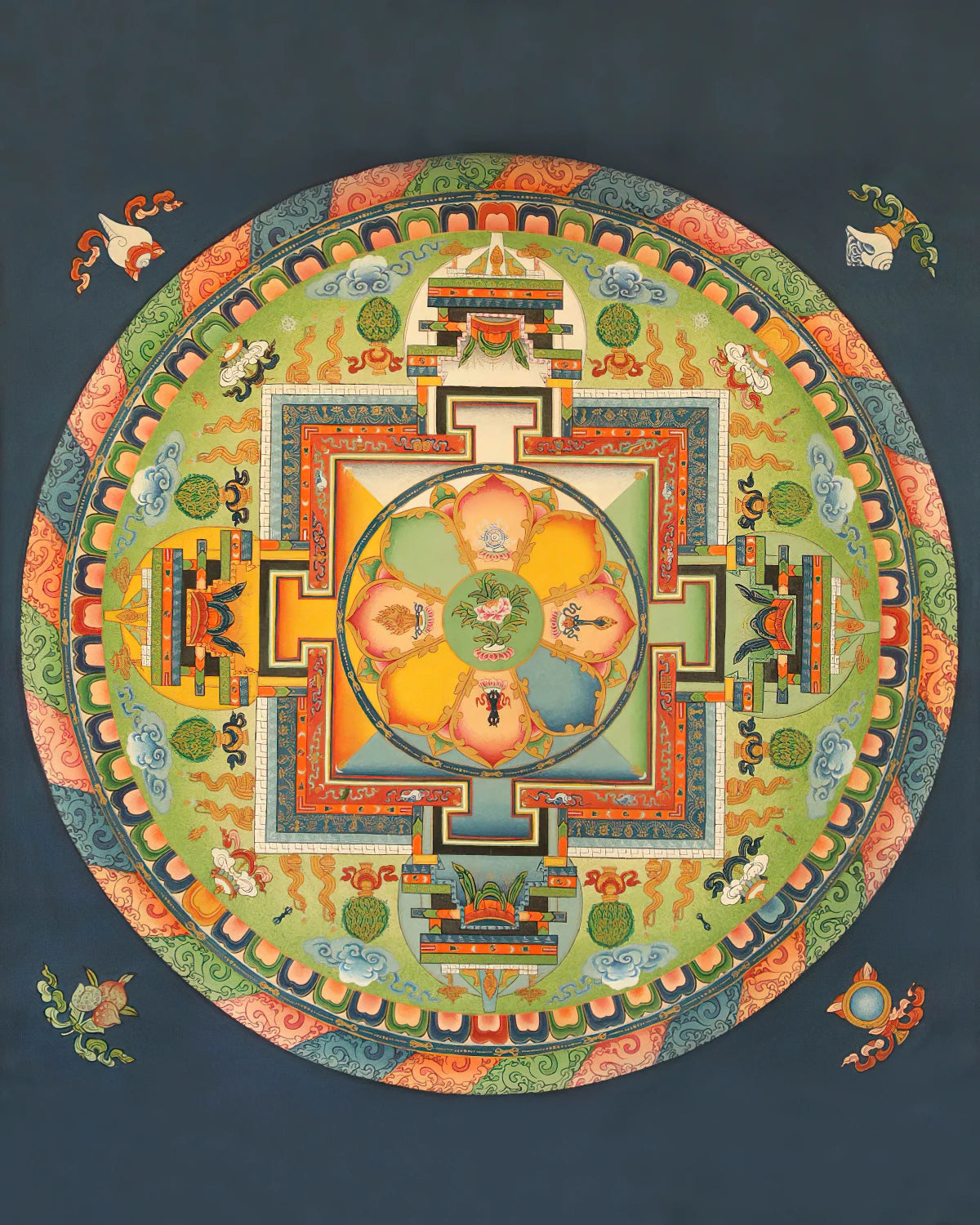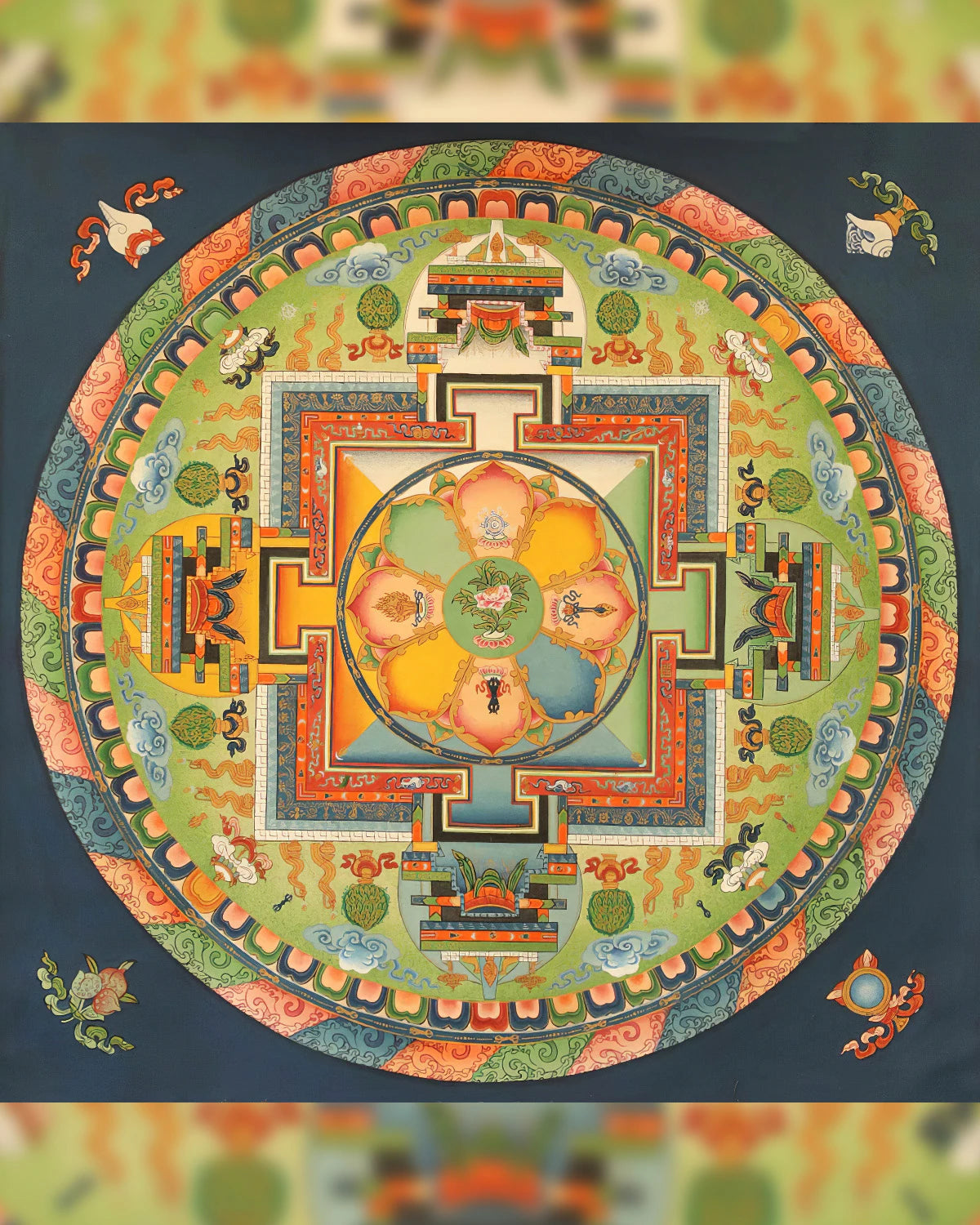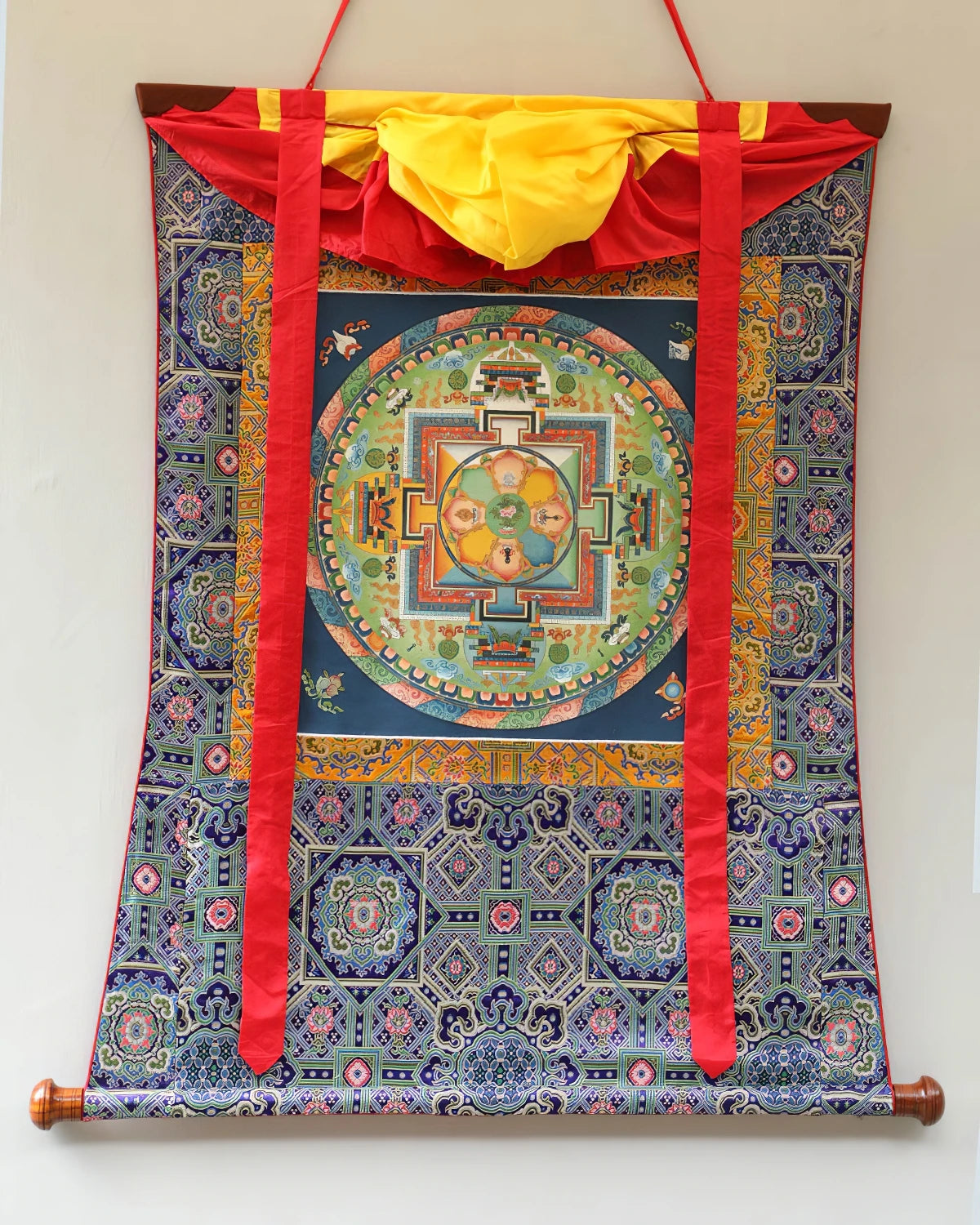



Avalokiteshvara Mandala
A Mandala is a visual representation of the abode of a deity or god. However, the appearance of the abode of a deity is said to depend on the mind of the one who is viewing it, so this depiction is merely how it would appear to human beings.
With the aid of initiation from a lineage holder and correct practice, it is possible to enter into the mandala and it becomes a vehicle of enlightenment. However, even glimpsing the mandala is said to create a positive effect on the mind-stream of the viewer.
The Mandala of Avalokiteshvara – the deity of compassion– is a physical manifestation of the heavenly realm of Potala. Its appearance here is a two-dimensional rendering of an actual structure that is shaped like a pyramid. Each aspect of the mandala represents a physical feature of the abode, as well as an aspect of the enlightened mind. Of these, the first floor and the outermost square represent the qualities of a Buddha’s bodily activities. The four doorways represent the Four Immeasurable Thoughts: love, compassion, joy, and equanimity. The second floor is that of his speech, the floor above that of his mind, while the last floor – depicted as the smallest innermost square – represents the fully enlightened intelligence. At the pyramid’s pinnacle, upon a blossoming lotus, stands white thousand-armed Avalokiteshvara. The entire mandala is surrounded by a vajra fence, which protects the abode and burns away delusions and the darkness of ignorance.
The thangka comes framed in a traditional silk brocade border.
Craftsmanship
Choose options





